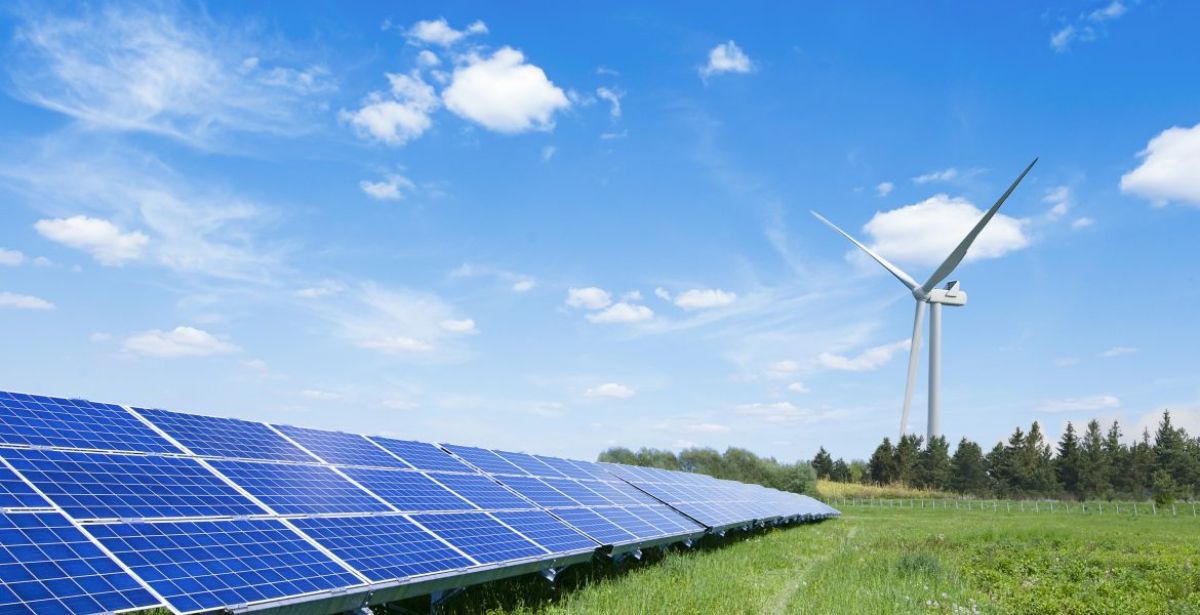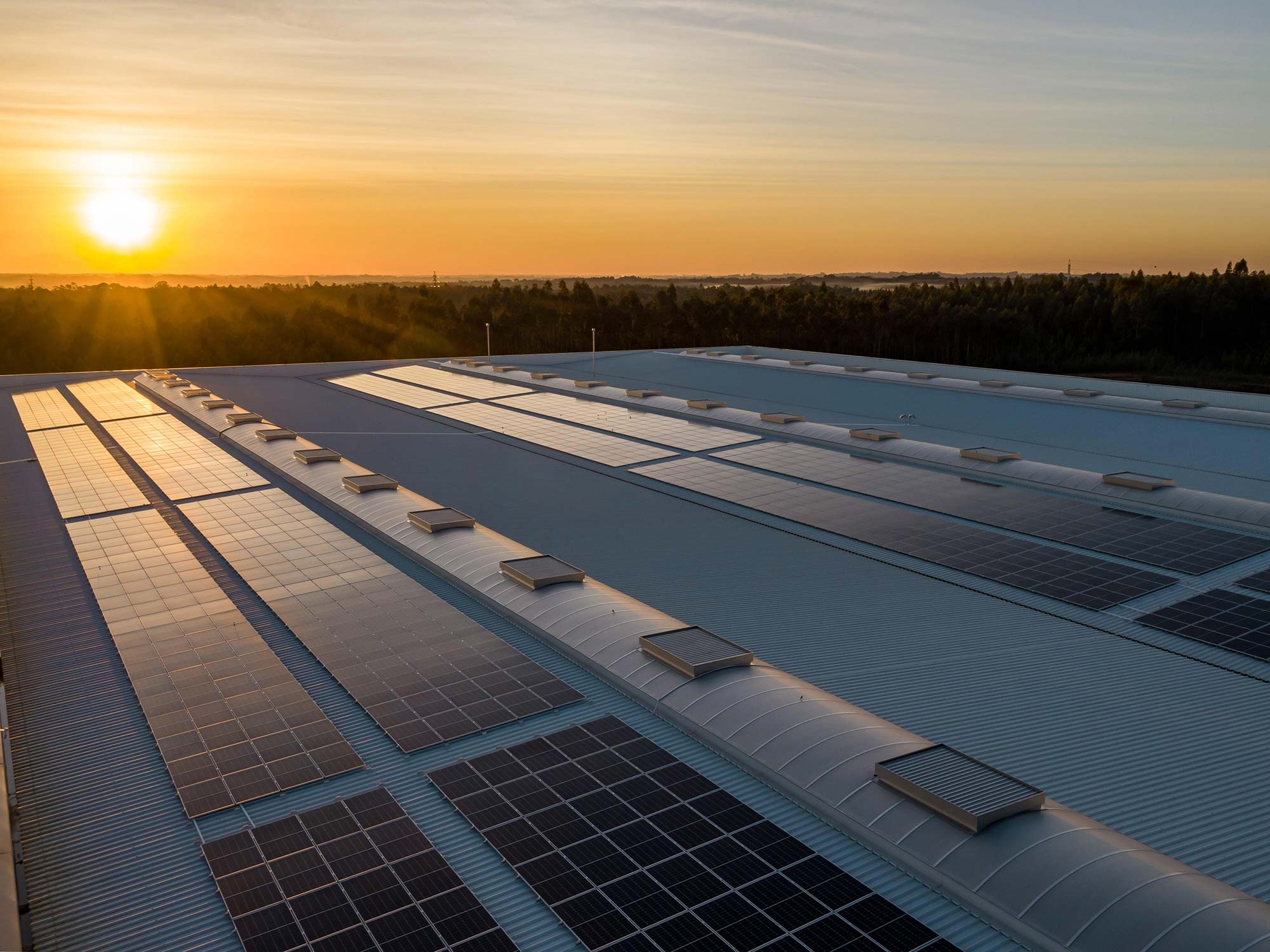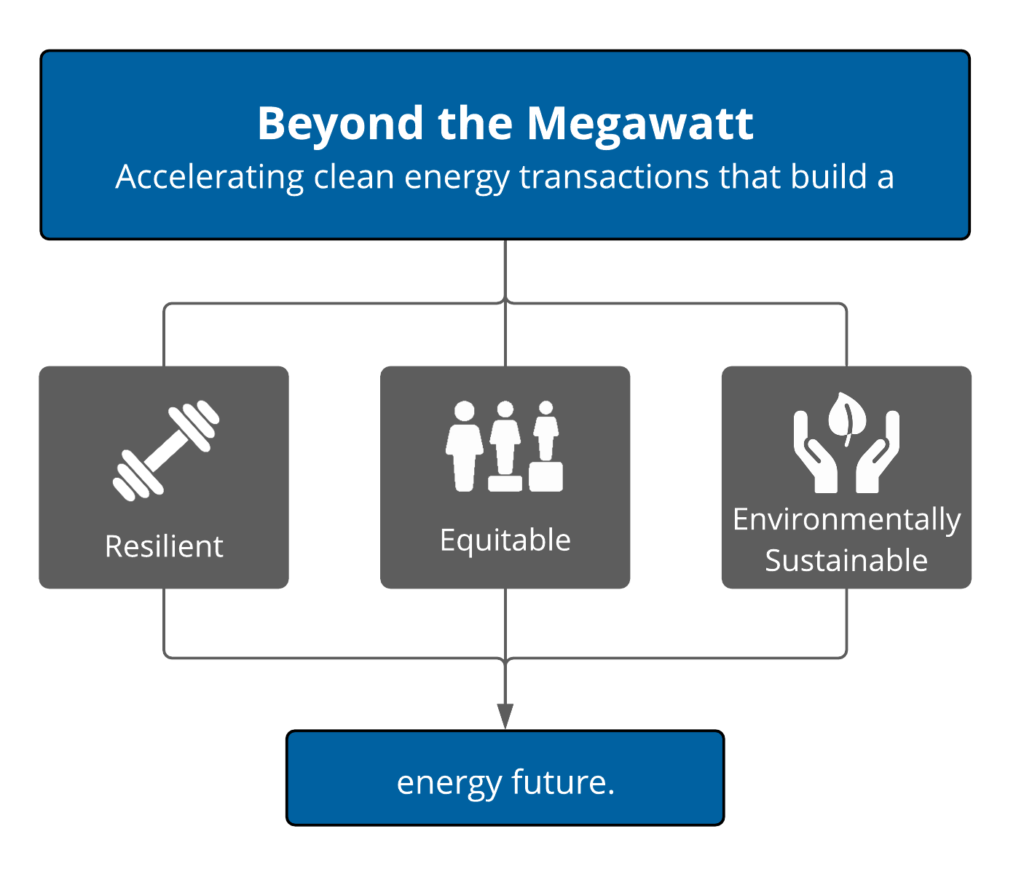Coalition of 18+ Leading Companies Representing Over $498 Billion in Annual Revenues Commit to Aspirational Principles for Purpose-Driven Energy Procurement
The Clean Energy Buyers Institute (CEBI) Beyond the Megawatt Initiative brings together clean energy champions from the commercial and industrial sector to advance resilience, equity, and environmental sustainability in energy procurement.
Washington, D.C. – (June 6, 2023) – Building on growing energy industry demand for impactful clean energy solutions, the Beyond the Megawatt Initiative launches the Principles for Purpose-Driven Energy Procurement. Over 18 signatories commit to evaluating project options that maximize clean energy benefits with a dedicated focus on the integration of environmental sustainability, resilience, and equity considerations in procurement decisions.
Energy customers have taken an active role in shaping the energy market, voluntarily procuring over 64.5 gigawatts of new clean energy capacity in the U.S. and across the global electricity system in the last decade. Since the launch of Beyond the Megawatt in 2022, the number of projects embedding these Principles has grown significantly.
“In this pivotal moment in the evolution of energy markets, we’re reminded that no organization can effect transformative change alone,” said Kevin Hagen, interim CEO of CEBI. ” The Principles for Purpose-Driven Energy Procurement signify a collective commitment from industry-leading stakeholders – many that are members of the Clean Energy Buyers Association. Together, we are using the power of the corporate customer to drive change toward a grid that is more reliable, resilient, cost effective as well as environmentally and socially responsible for everyone.”
The Principles for Purpose-Driven Energy Procurement are established by leading energy stakeholders and provide aspirational considerations for industry members to maximize the benefits of clean energy procurement individually and collectively. Although non-binding, these Principles mark a significant step in evolving energy customer decision-making, focusing on the identification of impactful clean energy projects.
“All renewable energy is not created equal, and there’s an opportunity for purpose-driven procurement, when embedded into energy buying processes, to create a powerful demand signal for more sustainable, just, and resilient renewable energy projects. These Principles are fundamentally aligned with our approach to Responsible Solar. We are not just committed to responsible manufacturing but powering our global operations with clean energy that aligns with our values,” said Samantha Sloan, vice president of Policy, Sustainability, and Marketing for First Solar.
Industry-leading stakeholders have united under a shared recognition that transformation in the energy sector cannot be achieved by any single organization, underscoring the need for collective action. This understanding has fueled the momentum behind the launch of the Principles for Purpose-Driven Energy Procurement. The Beyond the Megawatt community, predominantly comprised of energy customers and providers, is dedicated to fostering collaboration and synergy. Together, they aim to turn new clean energy development into a dynamic force for environmental stewardship, climate resilience, and prosperity.
“The energy transition offers an unprecedented opportunity to advance environmental sustainability, resiliency, and social equity—but this type of transformational change is only possible through collective action,” said Mark Goodwin, president and CEO of Apex Clean Energy. “This commitment represents decisive action that will maximize the benefits of clean energy procurement in the years to come, and Apex is honored to be among those leading the charge.”
“At Silicon Ranch, one of our core beliefs as a landowner and neighbor in every community we serve is that responsibly-developed solar energy projects create enduring, long-term value and deliver a meaningful legacy to the communities in which they are located. We are proud to have helped craft CEBA’s new Beyond the Megawatt’s Principles for Purpose-Driven Energy Procurement, raising the industry standard for the opportunities each solar project can represent beyond providing cost-effective, reliable, renewable energy, and believe the greatest benefit will be the long-term positive economic, environmental, and social impact on communities,” said Reagan Farr, Co-founder and CEO, Silicon Ranch.
Environmental Sustainability: Respecting and conserving our lands, waters, and biodiversity, implementing strategies such as dual-use approaches like agrivoltaics and pollinator-friendly solar, prioritizing project siting on degraded lands where possible, and implementing the mitigation hierarchy for environmental impact across the project life cycle.
Resilience: Emphasizing the long-term efficiency and adaptability of our energy systems, increasing investments in the resilience of regional grid infrastructure and clean energy supply chains, and actively contributing to the stability and reliability of the grid through clean energy generation and energy storage solutions development.
Social Equity: Advancing an equitable and just energy transition that empowers and restores communities, upholds human rights, and ensures that communities are active participants, decision-makers, and beneficiaries at all stages of the project life cycle.
CEBI and the Beyond the Megawatt Initiative continue to work with a broad coalition of energy customers, procurement partners, and sustainability experts, as well as foundational funders Johnson & Johnson, Salesforce, Amazon, Hemlock Semiconductor (HSC), General Motors, First Solar, Walmart, and Workday.
For more information on the Principles for Purpose-Driven Energy Procurement or to become a signatory, please visit: cebi.org/programs/beyond-the-megawatt/principles or contact communications@cebi.org for more information.
The Clean Energy Buyers Institute (CEBI) is a public benefit charity dedicated to solving the toughest market and policy barriers to achieving a carbon-free energy system. Through the Beyond the Megawatt Initiative and Principles for Purpose-Driven Energy Procurement, CEBI supports the evolution of energy procurement toward environmental sustainability, resilience, and social equity. To learn more, visit www.cebi.org.











